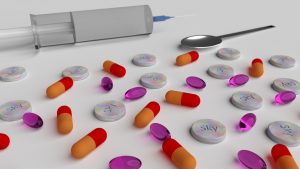LSD, lysergic acid diethylamide, is a powerful, mood-changing chemical made from lysergic acid. LSD is produced in crystal form and converted to liquid for distribution. It is colorless, odorless, and has a bitter taste.
LSD is commonly known on the streets as “acid,” but it has other nicknames as well. It is sold in the form of tablets, gelatin squares, and caplets. Whatever the form, LSD use has the same result – a disconnection from the real world.

(Pixabay / ColiN00B)
The LSD-induced experience, typically called a “trip,” usually lasts up to 12 hours. If things go wrong, the experience could degenerate into a “bad trip” or “living hell.”
The use of LSD has a profound effect on the user’s brain. There is often a loss of self-identity and a disconnection from one’s environment. There are reality distortions and users may not recognize themselves, or even feel they have become one with the world. They may feel like their consciousness has transferred outside their body and now coexists with the universe.
When LSD is influencing the brain, sensory areas may communicate more heavily than normal. Measurements of brain activity in LSD users indicate very strong activity between the regions of the brain in charge of self-reflection and those dedicated to perceiving the external world; creating LSD’s signature visual distortions and hallucinations
While there have been advances in the use of LSD for therapy, researchers agree that more studies are needed to understand the full effects of LSD on the human brain. Nonetheless, they are certain about the drug’s powerful ability to detach people from reality and cause them to see the world through a significantly skewed lens.